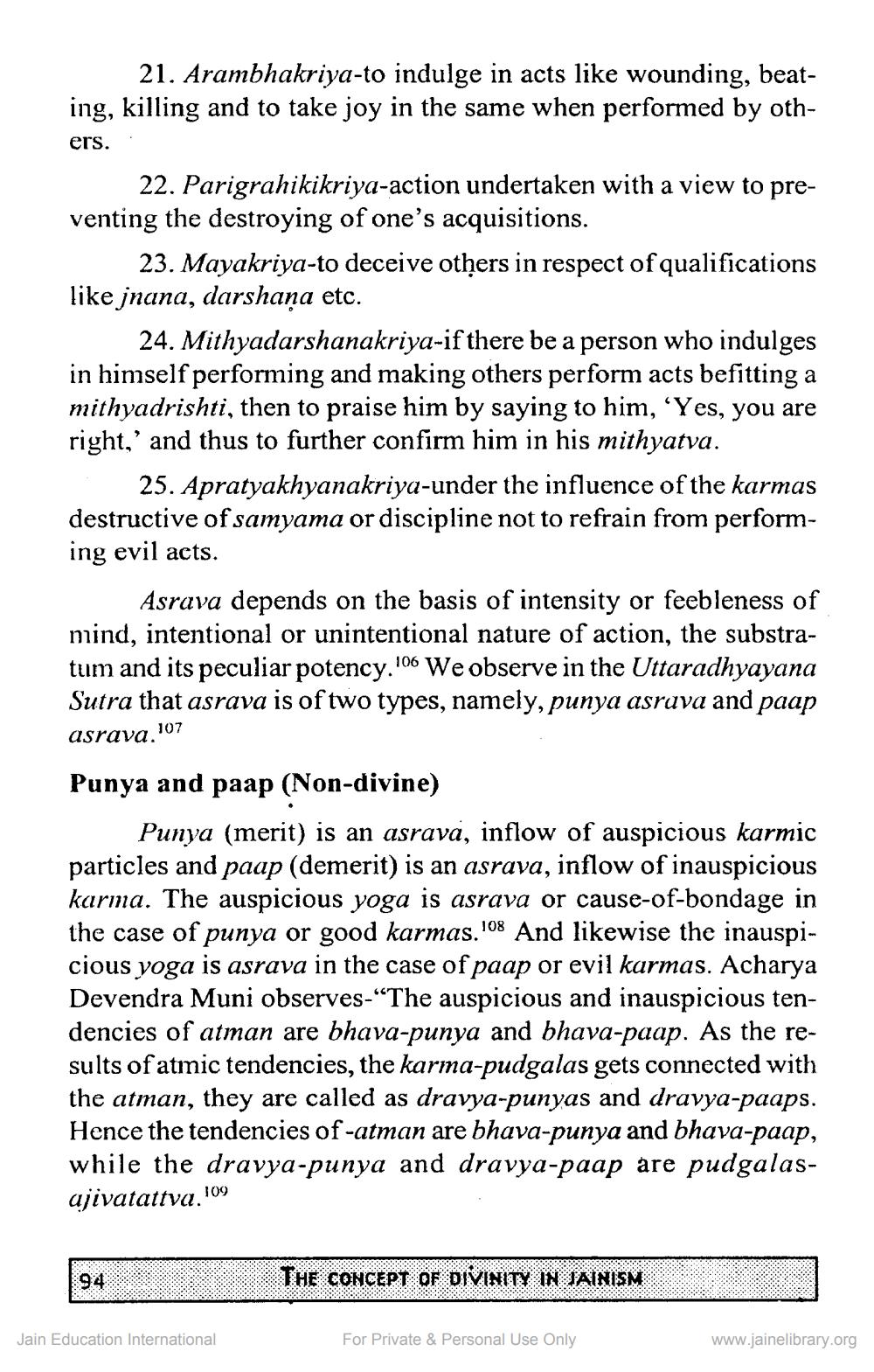________________
21. Arambhakriya-to indulge in acts like wounding, beating, killing and to take joy in the same when performed by oth
ers.
22. Parigrahikikriya-action undertaken with a view to preventing the destroying of one's acquisitions.
23. Mayakriya-to deceive others in respect of qualifications like jnana, darshaņa etc.
24. Mithyadarshanakriya-if there be a person who indulges in himself performing and making others perform acts befitting a mithyadrishti, then to praise him by saying to him, “Yes, you are right,' and thus to further confirm him in his mithyatva.
25. Apratyakhyanakriya-under the influence of the karmas destructive of samyama or discipline not to refrain from performing evil acts.
Asrava depends on the basis of intensity or feebleness of mind, intentional or unintentional nature of action, the substratum and its peculiar potency.106 We observe in the Uttaradhyayana Sutra that asrava is of two types, namely, punya asruva and paap asrava, 107 Punya and paap (Non-divine)
Punya (merit) is an asrava, inflow of auspicious karmic particles and paap (demerit) is an asrava, inflow of inauspicious karma. The auspicious yoga is asrava or cause-of-bondage in the case of punya or good karmas.108 And likewise the inauspicious yoga is asrava in the case of paap or evil karmas. Acharya Devendra Muni observes-“The auspicious and inauspicious tendencies of atman are bhava-punya and bhava-paap. As the results of atmic tendencies, the karma-pudgalas gets connected with the atman, they are called as dravya-punyas and dravya-paaps. Hence the tendencies of -atman are bhava-punya and bhava-paap, while the dravya-punya and dravya-paap are pudgalasajivatattva. 109
THE CONCEPT OF DIVINITY IN JAINISM
Jain Education International
For Private & Personal Use Only
www.jainelibrary.org




